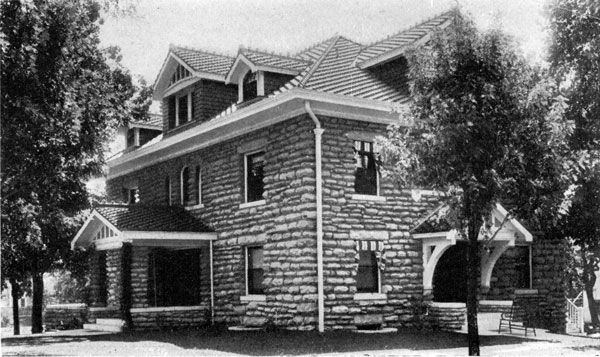
Every block of Midtown Kansas City has a unique history, and the block between Armour and 36th, McGee and Gillham is steeped in Catholic history and the transformation of Armour Boulevard from a boulevard of mansions to a busy street lined with luxury residential hotels.
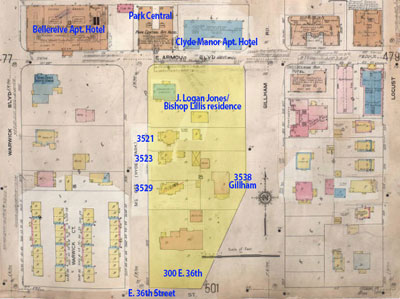
Sanburn map from 1909-1950 showing the block and surrounding areas of Midtown.
As part of our Uncovering History Project, the Midtown KC Post is examining each block in Midtown. A set of 1940 tax assessment photos is available for many blocks.
In 1904, J. Logan Jones was prospering. He and his brother Lawrence had owned several dry goods stores in Kansas and built the seven-story Jones Dry Goods Company in Kansas City at 6th and Main in 1895. The store was very successful, and Jones took on a role as both a commercial and civic leader. That year, he decided to build a home on Armour Boulevard, then a street of some of the most lavish mansions in Kansas City, on a large lot fronting Armour between Gilliam and McGee.
“The large lot on which Mr. Jones’ new home will stand is well covered with native forest trees, including scaly bark hickory, black walnut, sycamore, elm, white oak, hackberry and blackthorn. The contour of the ground is such as will admit a sunken garden in the rear. The plans include a large, roomy stable built of stone to conform to the general outlines of the residence, “the Kansas City Star wrote on July 31, 1904.
Architect Charles Smith designed the house. “It will be of the old English type, constructed of Phoenix stone, with a red tile roof. The exterior of the house will be simple in detail, but with large, substantial features.”
“The main features of the first floor will be the living and dining rooms, 18×28 feet and 15×23 feet respectively. They will have real old English oak beamed ceilings with wood panels and cornice and wainscoting and will be equipped with brick fireplaces that will be large enough to take in full size cordwood,” the Star said.
Despite his business acumen, the economic downturn of 1907 hit the Jones Dry Goods Store hard, and a few years later, Jones sold both the business and his home at 301 E. Armour. Jones moved to 3707 Holmes.
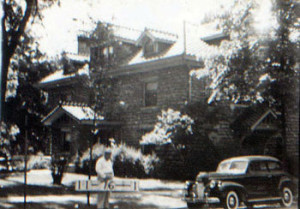
The house at 301 E. Armour in 1940.
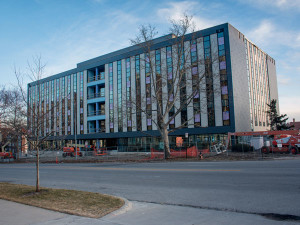
Redevelopment of the building at 301 E. Armour is currently underway.
That was how Bishop Thomas Francis Lillis acquired the property in 1911 as an episcopal residence. The following year, the home’s lawn hosted 5,000 children and 2,500 adults who knelt in groups to be blessed by visiting Cardinal Gibbons.
Lillis lived in the home until he died in 1938 when Bishop Edwin O’Hara moved in. But by 1943, Bishop O’Hara, feeling Armour Boulevard had changed, moved to 5306 Sunset Drive.
“Bishop O’Hara’s purchase was understood to have been motivated by a desire to get into a residential neighborhood. Armour Boulevard, a center of fine homes when the late Bishop Lillis, then co-adjutor to Bishop Hogan, bought the stone residence in 1911, has become a heavily traveled thoroughfare, with many of the fine homes replaced by hotels and apartments and others converted to commercial or industrial uses.” the Kansas City Star reported on Aug. 6, 1943.
But O’Hara had the idea to repurpose the stone home, and 1948 the Catholic Community Library opened there. The library held 15,000 books “embodying the Christian way of life,” and held lectures and classes.
The home was replaced in 1959 by a seven-story commercial building that, over the years, was home to businesses such as IBM, Braniff Airlines, and Occidental Petroleum. Last year, MAC Properties announced plans to redevelop the building with mixed commercial and apartment uses.
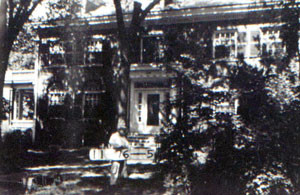
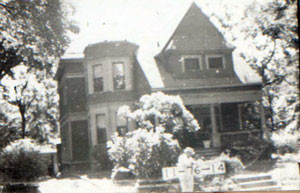
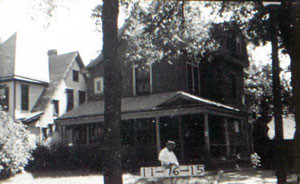
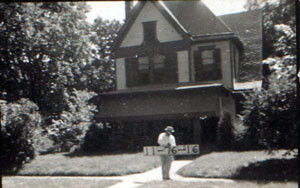
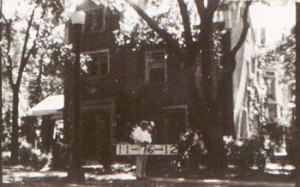
300 E. 36th before the addition.
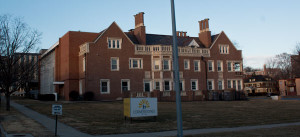
300 E. 36th today.
The final home on the block, 300 E. 36th Street, was built in 1907 for William Magraw and Mary Alice Moore Reid. The Catholic Diocese bought the rest of the property on the block in 1953-4, and it became the chancery; the building was expanded in 1959 when a three-story addition was erected. Cornerstones of Care, a family of community service agencies, is currently housed in the building.
Historic photos courtesy Kansas City Public Library/Missouri Valley Special Collections.